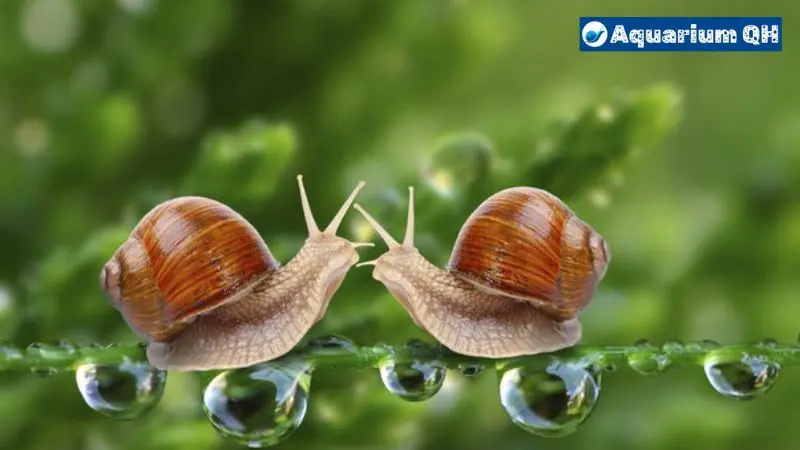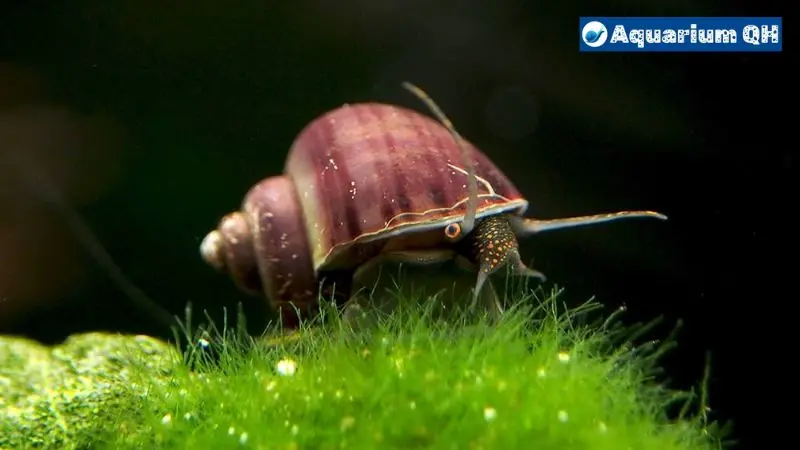Have you ever found yourself staring at your pet snail, wondering why it hasn’t moved in days? As a snail owner, witnessing your beloved gastropod companion staying still for an extended period can be distressing.
Let’s delve into the emotional turmoil and explore the possible reasons behind this phenomenon with Aquarium QH.
Explanations For Snail Hasn’t Moved in 3 Days

Environmental Factors
Environmental conditions play a crucial role in the vitality of a snail. Fluctuations in temperature, humidity levels, and habitat can directly impact their activity and well-being.
Temperature and Humidity
Snails are highly sensitive to temperature changes. Extreme heat or cold can cause them to enter a state of dormancy, where they remain inactive to conserve energy and protect themselves from unfavorable conditions. Similarly, inadequate humidity levels can lead to dehydration, prompting snails to seek refuge in their shells until conditions improve.
Lack of Food or Water
A snail’s movement is closely tied to its need for sustenance. If a snail hasn’t moved in days, it may indicate a lack of access to food or water. Without proper nutrition and hydration, snails become lethargic and may retreat into their shells to conserve energy.
Health Issues
Just like any other living creature, snails are susceptible to injuries, illnesses, and stressors that can affect their mobility and behavior.
Injury or Illness
Physical injuries, such as damage to the snail’s foot or shell, can impede its ability to move freely. Additionally, snails can contract diseases or infections that weaken their overall health and vitality, leading to prolonged periods of inactivity.
Stress Factors
Stressful environments or encounters with predators can trigger a defensive response in snails, causing them to retract into their shells and remain motionless until they perceive the threat to have passed. Similarly, sudden changes in their surroundings, such as relocation to a new habitat, can induce stress and disrupt their normal behavior patterns.
What Should You Do When the Snail Hasn’t Moved in 3 Days?

Adjusting the Environment
Once you’ve identified potential factors contributing to your snail’s immobility, take proactive steps to create a more conducive environment for its well-being.
Temperature and Moisture Control
Ensure that your snail’s habitat maintains stable temperature and humidity levels within the optimal range for its species. Consider using a reliable thermometer and hygrometer to monitor conditions accurately.
Providing Nutritious Food and Water
Offer a varied diet rich in calcium and other essential nutrients to support your snail’s health and vitality. Fresh fruits, vegetables, and commercially available snail food can help meet their dietary requirements and encourage activity.
Providing Care and Support
Show your snail compassion and understanding as it navigates through any challenges or health issues.
Gentle Handling and Encouragement
Handle your snail with care and gentleness, avoiding sudden movements or rough handling that could cause further stress or injury. Offer words of encouragement and reassurance to let your snail know that it’s safe and loved.
Emotional Support for Pet Owners
Remember that caring for a pet, whether it’s a dog, cat, or snail, comes with its share of worries and responsibilities. Reach out to fellow pet owners or loved ones for emotional support and guidance as you navigate through this challenging time together.
Conclusion
In conclusion, discovering that your snail hasn’t moved in three days can evoke a range of emotions and concerns. By understanding the possible explanations behind this behavior, such as environmental factors or health issues, you can take proactive steps to assess the situation and provide the necessary care and support for your beloved gastropod companion. Remember to seek professional advice if needed and to approach the situation with patience, empathy, and love.
FAQs (Frequently Asked Questions)

- Q: Can snails die if they don’t move for an extended period?
- A: While snails can enter a state of dormancy where they remain inactive for days or even weeks, prolonged immobility can indicate underlying health issues that may require attention.
- Q: What should I do if my snail hasn’t moved for several days?
- A: Monitor your snail closely for any signs of distress or illness, and consider adjusting its environment to promote optimal conditions for its well-being. If you’re unsure or concerned, consult a veterinarian with experience in exotic pets.
- Q: How long can snails go without food or water?
- A: Snails can survive for extended periods without food or water, but adequate hydration and nutrition are essential for their overall health and vitality. Ensure that your snail has access to fresh water and a balanced diet to support its well-being.
- Q: Will my snail become more active if I provide it with companions?
- A: While some species of snails may exhibit social behaviors and interactions, introducing companions should be done with caution to prevent overcrowding and potential conflicts. Pay attention to your snail’s behavior and adjust its environment accordingly.
- Q: Are there any warning signs I should look out for if my snail is unwell?
- A: Keep an eye out for changes in your snail’s appearance, behavior, and appetite, as these can indicate potential health issues. Additionally, consult reputable sources or seek professional advice if you notice any concerning symptoms or abnormalities.




